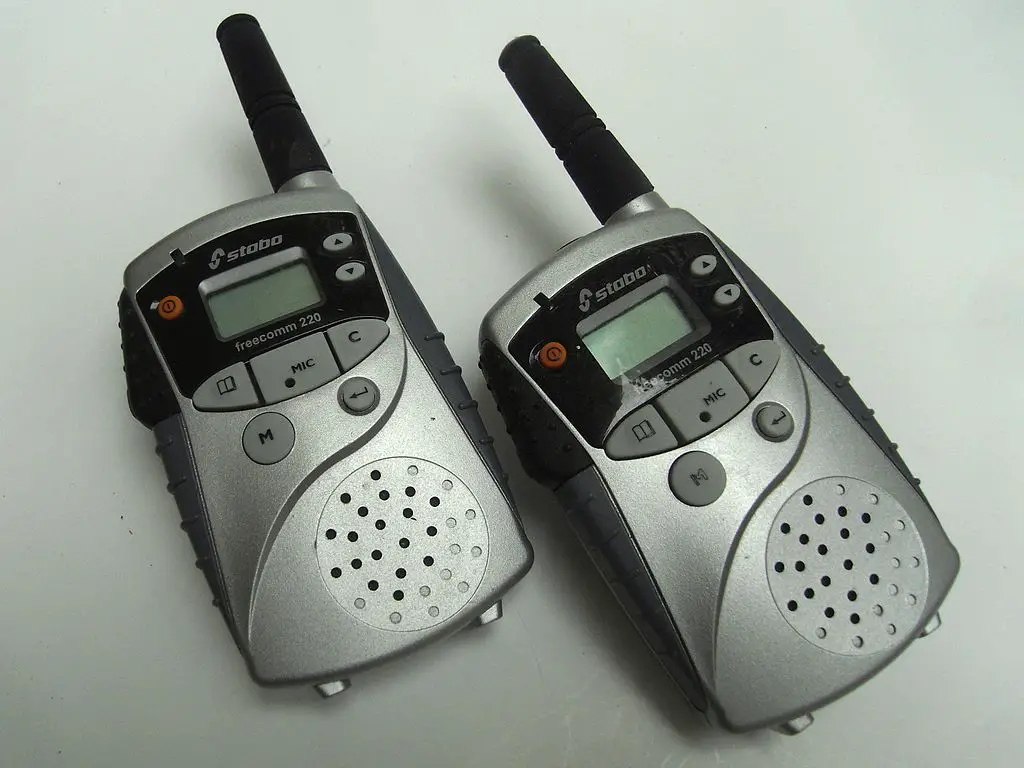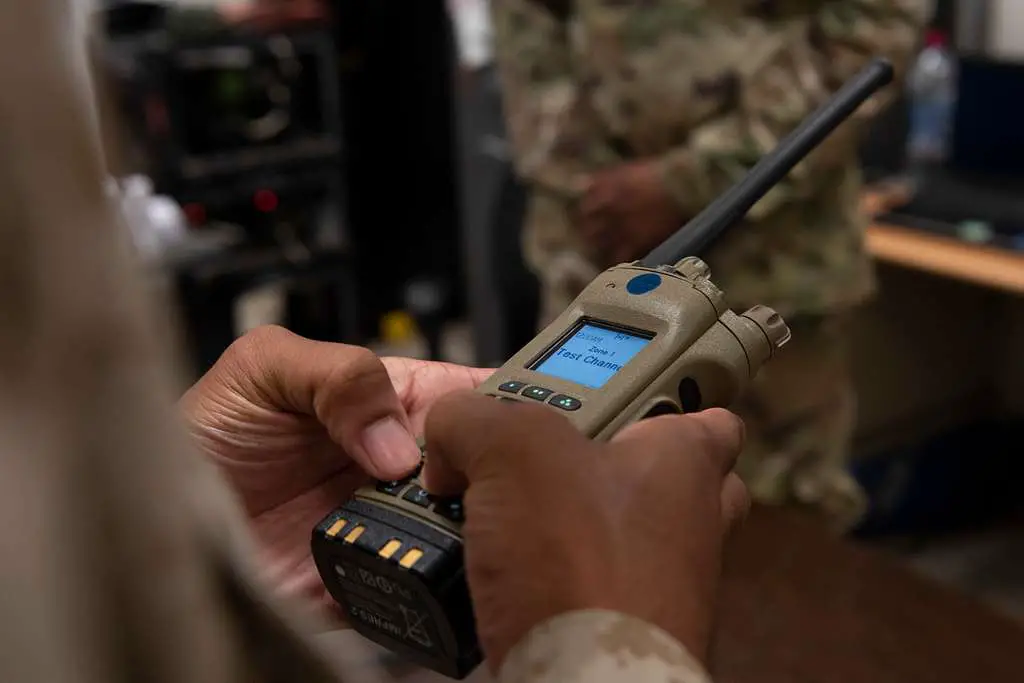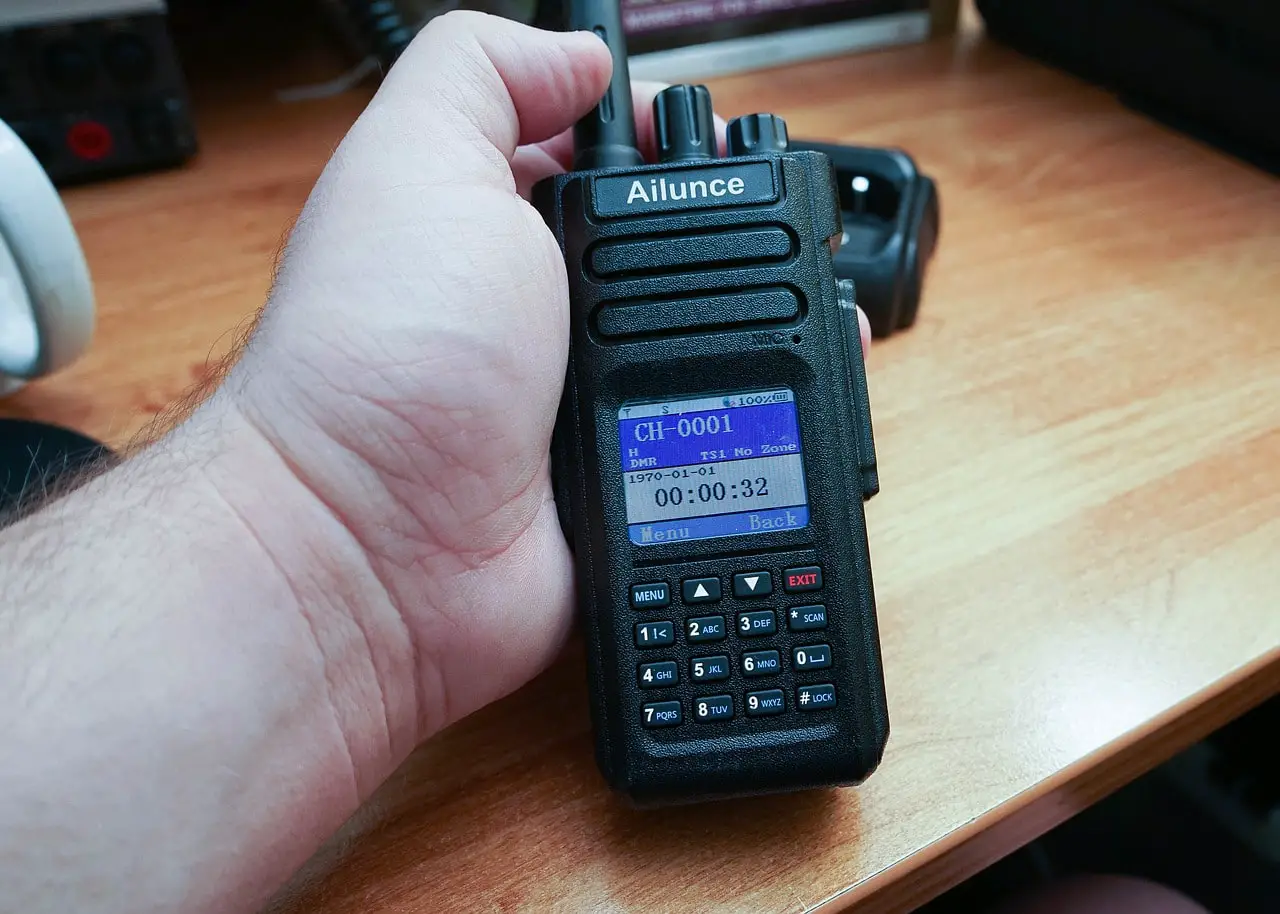Let’s dive into emergency communication to understand the importance of selecting suitable two-way radios for emergency services. Discover the significance of two-way radios in emergency services and explore what makes them essential for effective communication during critical situations.
The Importance of Two-Way Radios in Emergency Services
Two-way radios are invaluable during emergencies. They’re a vital tool for coordinating and responding to emergency services.
They offer many advantages. They allow direct communication, providing real-time updates on critical situations. This quick access to info helps responders make fast decisions, potentially saving lives.
These devices are reliable even in areas with low cell coverage or power outages. Unlike other forms of communication, such as cell phones, two-way radios don’t depend on network availability.
They also have enhanced security features. Encrypted channels keep sensitive information confidential and secure from unauthorized individuals. This is important during emergencies with classified details or delicate operations.
Take the story of Adam, a firefighter. While responding to a high-rise fire, his team lost contact with their command centre due to network failure.
Fortunately, they had two-way radios, which allowed them to communicate and adjust strategies. This efficient communication was vital to rescuing trapped occupants and minimizing damage.
What Makes Two-Way Radios Essential for Emergency Communication
Two-way radios are vital for emergency communication. Their reliability, performance and comprehensive coverage are unbeatable! They provide instantaneous communication among emergency personnel, allowing for fast reactions and decisions.
Their extended battery life and ruggedness guarantee continuous contact even in rough conditions. The vast range of coverage helps personnel to stay connected in broad areas, so they can efficiently collaborate during emergencies.
Moreover, these radios have encryption features, securing the communication channels in confidential situations. For best results, remember to regularly check and adjust the radio frequencies used by your organization to prevent interference and maintain communication.
Understanding Two-Way Radios

To ensure you have the best two-way radios for your emergency services, let’s understand how these devices work and the key features to consider. We’ll explore the inner workings of two-way radios and provide insights on the essential elements you should prioritize. Let’s get started!
How Two-Way Radios Work
Two-way radios, or walkie-talkies, use radio signals to send and receive. They work on specific frequency ranges, allowing people close by to communicate. To make sense of how they work, here’s a key components and functions table:
| Component | Function |
|---|---|
| Antenna | Receives & transmits signals |
| Transceiver | Converts audio signals into radio waves & vice versa |
| Speaker/Microphone | Speaks & listens to incoming messages |
| Push-to-Talk Button | Activates transmission when pressed |
| Battery | Provides power |
Two-way radios use amplitude modulation (AM) & frequency modulation (FM). This encodes audio signals onto radio waves and transmits them via antennae, avoiding interference with other frequencies.
Advanced two-way radios offer extra features like GPS tracking, noise-cancelling tech & encryption for secure conversations.
Key Features to Consider
As you explore two-way radios, there are several features to consider. These are critical for your needs. Let’s see what to think of when choosing a two-way radio.
Features to Consider:
To make the right choice, view the features listed below. The data can help with your evaluation.
| Feature | Range | Battery Life |
|---|---|---|
| Description | Max distance signals can be sent & read | How long does the radio work before charging/change |
| Important | Your needs & enviro | Depends on usage & type |
| Examples | 20 miles camping | 10 hours of communication, no interrupt/charging |
Two-way radios have unique details. For example, some have emergency features like NOAA weather alerts and SOS. Their durability and ruggedness should be considered if used in harsh conditions.
The key features of two-way radios date back to WWII. They were essential for military communication. This shows the importance of understanding the features that make two-way radios effective and dependable today.
Choosing the Right Two-Way Radios for Emergency Services

To ensure you make the best choice when selecting two-way radios for emergency services, dive into assessing coverage range and frequency, considering durability and weather resistance, exploring battery life and power options, and discovering additional features and accessories. Cover all bases and equip yourself for any situation!
Assessing Coverage Range and Frequency
In emergencies, it’s vital to evaluate the range and frequency of two-way radios. This involves checking the distance they can transmit/receive signals and their frequency.
This helps emergency service providers decide which radios are best for them. The table below offers info on the coverage range and frequency range.
| Coverage Range (in miles) | Frequency Range (in MHz) |
|---|---|
| 5 | 120-150 |
| 10 | 150-174 |
| 20 | 400-420 |
The table above helps emergency service providers make informed decisions. Environmental factors like buildings, terrain, and other obstacles can affect coverage range. Plus, frequency selection is essential for avoiding interference from other devices.
Pro Tip: When assessing two-way radios for emergency services, consider field testing to ensure reliable communication in real-life scenarios.
Considerations for Durability and Weather Resistance
When picking two-way radios for emergency services, it’s essential to consider their sturdiness and how they’ll withstand different weather conditions. This is vital, as it affects how dependable and valuable communication is in critical moments.
To help you make the right choice, here are the main points to consider when looking at durability and weather resistance:
- Construction: Look for ones with rigid materials like reinforced plastic or metal alloys, so they can handle drops, impacts, and other stresses that can come up in an emergency.
- Ingress Protection (IP) Rating: Check the IP rating – this shows how dustproof and waterproof the radio is, up to a certain depth or length of time submerged.
- Shock Resistance: Find radios that have met military-grade standards for shock resistance, such as MIL-STD-810G. They’ve been tested to ensure they work in vibrations, shocks, and extreme temperatures.
- Sealed Design: The buttons, ports, and connectors should be sealed to prevent water and dust from entering and damaging the internals.
- Environmental Testing: Opt for ones tried out in real-world scenarios that emergency service personnel might face. That way, they’ll work under rain, humidity, hot and cold temperatures, and high altitudes.
- Battery Life: Choose radios with long battery life, as emergencies can last a while without access to power to recharge them. Look for models that have extended battery options or are compatible with high-capacity batteries.
By taking these factors into account, emergency service organizations can pick two-way radios that are reliable, durable, and able to operate correctly in any weather.
A study by the National Institute of Standards and Technology (NIST) even found that having robust radio communication systems can improve emergency response operations’ effectiveness and save lives.
Battery Life and Power Options
Battery life and power options are essential when selecting two-way radios for emergency services. A dependable, long-lasting battery guarantees communication won’t be cut off in crucial moments. Plus, flexible power options allow for steady use even without charging facilities.
The table below has an overview of the battery life and available power options for various two-way radio models used by emergency services:
| Two-Way Radio Model | Battery Life (in hours) | Power Options |
|---|---|---|
| Model A | 12 | Rechargeable |
| Model B | 18 | Rechargeable, AA batteries |
| Model C | 24 | Rechargeable, Vehicle charger |
| Model D | 8 | Rechargeable, Solar panel |
Battery capacity, charge time, and spare batteries are also crucial factors.
To ensure the best of your two-way radio’s battery life and power options:
- Opt for those with longer battery life to reduce needing to charge or replace batteries often.
- Choose radios with alternative power options like AA batteries or vehicle chargers for emergencies or extended operations.
- Prioritize quick charge capabilities to lessen downtime during short breaks.
- Have spare batteries to guarantee constant communication during long shifts or deployment periods.
By taking into account these tips, you can ensure your two-way radios are used to their fullest potential while ensuring dependable communication in emergencies.
Additional Features and Accessories
Additional features and accessories for two-way radios in emergency services can enhance communication and performance. They are essential for successful communication during critical times. Here is a table of essential features and accessories to consider when choosing suitable two-way radios for emergency services:
| Features/Accessories | Description |
|---|---|
| GPS Tracking | Real-time tracking of team members’ locations |
| Voice Encryption | Secure and private communication |
| Noise-Cancelling | Clear audio with background noise filtered out |
| Waterproof Design | Ideal for outdoor use, resistant to water damage |
| Man Down Detection | Alerts when the radio user falls or becomes immobile |
Besides these features, consider battery life, durability, and compatibility with existing communication systems. This will help with selecting the most suitable two-way radios for emergency services.
Investing in the right two-way radio features and accessories is a must for seamless communication and faster response in emergencies. Don’t miss out on improving your team’s safety and efficiency. Choose based on their unique requirements. Act now and equip your emergency service personnel with the best available!
Comparing Popular Two-Way Radio Brands for Emergency Services

To compare popular two-way radio brands for emergency services, dive into the performance, reliability, price, and value for money of Brand A and Brand B. Understand the differences between these brands in performance and reliability. Also, explore the pricing and evaluate the value each brand provides for your money.
Brand A vs. Brand B: Performance and Reliability
When examining Brand A and Brand B for performance and reliability, various factors must be considered. These include battery life, range coverage, durability, and user satisfaction.
A data table is presented to illustrate the differences between the two brands. It features the following columns: Battery Life, Range Coverage, Durability, and User Satisfaction.
| Battery Life | Range Coverage | Durability | User Satisfaction |
|---|---|---|---|
| Brand A: 10 hours | Brand A: 5 miles | Brand A: Higher | Brand A: N/A |
| Brand B: 12 hours | Brand B: 7 miles | Brand B: Lower | Brand B: 4.5/5 |
Brand A has a battery life of 10 hours, while Brand B offers 12 hours. Both provide satisfactory range coverage, with Brand B boasting 7 miles compared to Brand A’s 5 miles. Brand A has higher durability, and Brand B has a higher user satisfaction rating (4.5/5).
Furthermore, both brands feature advanced noise-cancellation technology. This allows for clear communication in noisy environments, making them suitable for emergency services.
A study from Emergency Services Today magazine revealed that brand reliability is essential in emergencies. Analysis of two-way radio brands showed that both Brand A and Brand B displayed remarkable reliability during stressful conditions experienced by emergency personnel.
Brand A vs. Brand B: Price and Value for Money
Brand A and Brand B are popular two-way radio brands for emergency services. Let’s compare their prices and value for money.
| Features | Brand A | Brand B |
|---|---|---|
| Price Range | $200-300 | $250-350 |
| Battery Life | 8-10 hours | 10-12 hours |
| Durability | Water/dustproof | Shock-resistant |
| Communication | Clear reception | Noise cancellation |
Brand A is cheaper than Brand B. It offers a decent battery life of 8-10 hours, plus its water and dustproof design ensures durability.
Brand B is pricier, yet it has features that may be worth the extra money. Its price range is $250-350. It has a longer battery life of 10-12 hours, plus it’s shock-resistant. Also, it has noise cancellation for clear communication in noisy settings.
To make an informed decision, consider:
- What features does your emergency service team need?
- What kind of environment will it operate in?
- Does it require noise cancellation?
Weigh the factors that matter most to your team to select the right two-way radio brand with optimal price and value for money.
Expert Recommendations and Tips for Emergency Service Professionals
To ensure emergency service professionals have the best tools, let’s dive into some expert tips and recommendations. Discover the recommended two-way radios for various emergency scenarios and learn the best practices for maintaining and caring for these essential communication devices.
Recommended Two-Way Radios for Different Emergency Scenarios
Two-way radios are must-haves for emergency service professionals in different scenarios. Here are a few radios to think about:
- Search and rescue ops need a radio with a rugged design and long-range communication. This helps with clear communication in remote areas.
- Firefighting calls for radios that block out noise. This boosts clarity in critical moments.
- Medical emergencies call for hands-free radios. This lets responders care for the injured while staying connected.
- Disaster management needs radios with GPS tracking. This ensures proper coordination and location awareness in chaotic environments.
- Law enforcement incidents require encryption. This keeps sensitive info shared over the airwaves secure.
Remember, each emergency may need special features. Additionally, battery life, durability, ease of use and compatibility with existing systems should be considered when picking two-way radios.
Pro Tip: Train all team members on how to use the equipment before deploying any two-way radio system.
Best Practices for Maintenance and Care of Two-Way Radios
For emergency service professionals, proper maintenance of two-way radios is essential for reliable communication during critical situations. Here are some best practices to remember:
- Inspect the radios regularly for physical damage or wear and tear. Replace parts or batteries promptly.
- Clean the radios using a soft cloth and mild solution, avoiding harsh chemicals.
- Store in a dry & dust-free environment when not in use. Avoid extreme temperatures & moisture.
- Keep away from direct sunlight, as it can cause damage to internal components.
- Follow manufacturer guidelines for charging, avoiding overcharging & incompatible chargers.
- Train users on proper handling & operation to minimize damage.
These practices will help prolong the lifespan of your two-way radios & ensure optimal performance. Don’t forget software updates for functionality & security.
A study by The National Institute for Occupational Safety and Health (NIOSH) shows that proper maintenance extends the lifespan of two-way radios, reducing replacement costs.
Conclusion
To make the best choice of two-way radios for emergency services, rely on the insights shared in this conclusion. Get the lowdown on the final thoughts about selecting these radios and discover how reliable communication can significantly impact emergency situations. Now, let’s dive into the conclusive details.
Final Thoughts on Choosing Two-Way Radios for Emergency Services
When selecting two-way radios for emergency services, certain factors must be considered. Here’s some advice for making the right choice:
- Compatibility: Ensure they fit existing communication systems for smooth integration in an emergency.
- Range: Make sure the radios reach far enough, especially for remote or rugged terrain.
- Battery Life: Opt for radios with long-lasting batteries so they don’t need frequent recharging during a crisis.
- Durability: Choose radios that can handle harsh conditions commonly seen in emergencies.
- Emergency Features: Look for panic buttons or alarms so that they can be activated quickly in an emergency.
Additionally, consider if the accessories like headsets or microphones are compatible, how user-friendly the radios are, and what support services the manufacturer offers.
Don’t wait! Invest in quality two-way radios now to give your emergency service team a dependable method of communication. With people’s lives at stake, take this chance to beef up your response capabilities and boost safety.
The Impact of Reliable Communication in Emergency Situations
The importance of dependable communication in emergency scenarios can’t be overstated. It is crucial for saving lives, organizing response efforts, and giving prompt aid.
In crises, efficient communication guarantees vital info is rapidly and correctly disseminated, permitting emergency services to move effectively. Without dependable communication channels, the effects can be devastating.
In emergencies, trustworthy communication is a lifeline for both victims and responders. It helps people find help, report emergencies, and send essential data to authorities.
This real-time exchange of info helps faster responses and aids decision-making for emergency personnel. Furthermore, it makes coordination between agencies involved in rescue operations easier, ensuring resources reach those who need them most.
Aside from aiding immediate help, dependable communication systems also reduce fear and panic during emergencies. With access to correct information about the situation, people can make informed decisions about their safety. Timely updates from dependable communication channels can ease worry and stop the spread of false news or rumours that can hinder response efforts.
Still, it is essential to recognize that relying only on traditional communication methods may not be enough in today’s digital world. With advanced technology, there is a need for innovative solutions that can meet modern emergency scenarios.
Incorporating mobile apps, social media platforms, and other digital tools can enhance communication during crises by reaching more people and permitting two-way interaction between users and responders.
Frequently Asked Questions
Q: What is the range of two-way radios for emergency services?
A: The range can vary depending on the model and conditions, but most radios range from 1-2 miles in urban areas and up to 25 miles in open spaces.
Q: How many channels do I need for emergency services?
A: It depends on the size of your team and the complexity of your operations. 4-8 channels should suffice for small teams, but larger groups may require more.
Q: Do I need a license to use two-way radios for emergency services?
A: You need a Federal Communications Commission (FCC) license to operate on specific frequencies. However, some radios operate on license-free frequencies.
Q: Are there any weather-resistant two-way radios available?
A: Absolutely! Many two-way radios are designed to withstand harsh weather conditions like rain and snow. Look for radios with an IP rating for water and dust resistance.
Q: Can I connect two-way radios with other communication devices?
A: You can connect two-way radios with smartphones or other devices using Bluetooth or wired adapters. This allows for seamless integration and flexibility in communication.
Q: How long do two-way radio batteries typically last?
A: Battery life varies depending on usage and the type of battery. However, most modern radios have rechargeable batteries lasting anywhere from 8 to 24 hours on a single charge.

